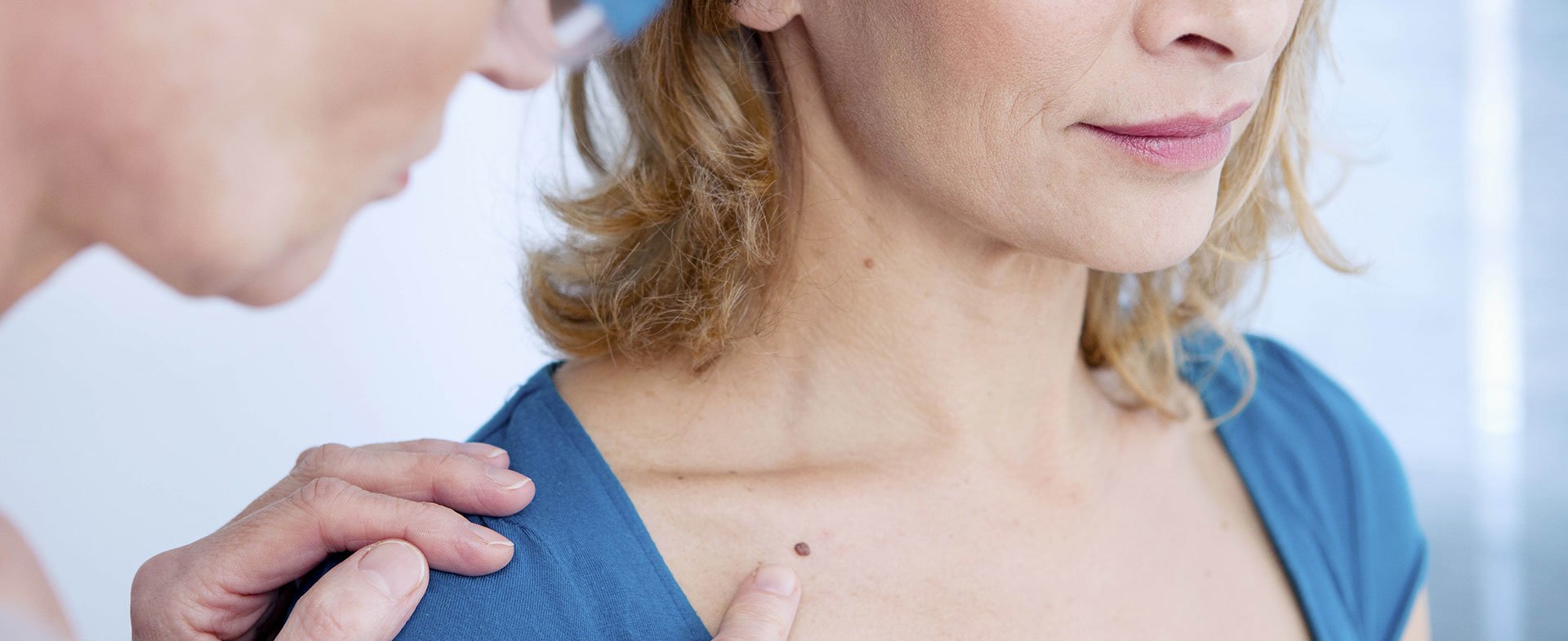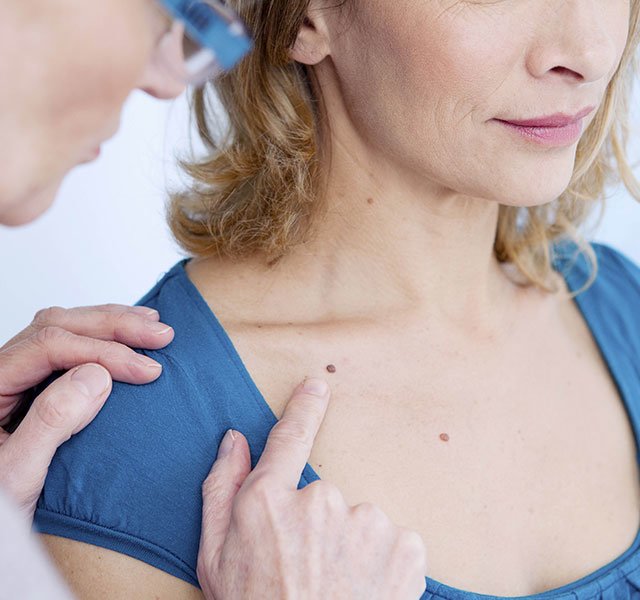Although fading tans and freckles may be signs of a great summer gone by, they're also signs of sun damage. They should be reminders that it's important to protect your skin from the sun all year round.
Practicing sun safety is key to reducing your risk of skin cancer, which is the most common cancer and accounts for more new cases each year than the combined incidence of breast, prostate, lung and colon cancers. Wear sunscreen daily and be sure to get an annual skin cancer screening. This non-invasive screening does not involve radiation exposure, only takes about 10 minutes, and can be life saving.
“A skin cancer screening is the first line of defense for diagnosing skin cancer,” says Laurie Kohen, M.D., a dermatologist with Henry Ford Health. “The earlier we can find these lesions the better the prognosis.”
During the screening, a dermatologist examines your body from head to toe using a dermatoscope, which has a magnifying lens and LED lighting to detect skin cancer and other skin conditions early. The device produces sharp, glare-free images that can help dermatologists monitor subtle changes in lesions over time, thus allowing cancerous lesions to be caught in their early stages.
An estimated one in five Americans will develop skin cancer in their lifetime, according to the American Academy of Dermatology. Basal cell carcinoma and squamous cell carcinoma are the most common types of skin cancer and are highly curable with early detection and proper treatment. Melanoma is the third type of skin cancer and considered the most deadly if allowed to spread to other parts of the body.
How to Protect Yourself
You can perform self-exams at home. Make sure to use a hand mirror to inspect hard-to-see areas like the back, back of the leg, butt and top of the head. Dr. Kohen suggests using the ABCDEs when deciding to see your dermatologist for a mole or skin lesion:
- A for asymmetry. One half is unlike the other half.
- B is for border. An irregular or poorly defined border.
- C is for color. Color varies from one area to another.
- D is for diameter. Melanomas are usually greater than 6 mm (size of a pencil eraser).
- E is for evolving. Looks different in size, shape or color than other moles or skin lesions.
These practical tips, says Dr. Kohen, can help to reduce your risk of skin cancer:
- Wear sunscreen with a SPF 30 or higher and with broad spectrum (UVA/UVB) and water resistant protection. Re-apply every two hours.
- Avoid the tanning booth. Research shows indoor tanning increases the risk of melanoma by 75%.
- Wear lip balm with sun protection and sunglasses with UV protection and a hat.
- When possible, wear long sleeves and pants.
- If possible, avoid the sun between 10 a.m. and 2 p.m. when the rays are the most intense.
Subscribe to receive a weekly email of our latest articles.
To make an appointment for a skin cancer screening, visit henryford.com or call 1-800-HENRYFORD (436-7936).
Dr. Laurie Kohen is a senior staff dermatologist seeing patients at Henry Ford Medical Center – New Center One in Detroit and Henry Ford Medical Center – Troy.



